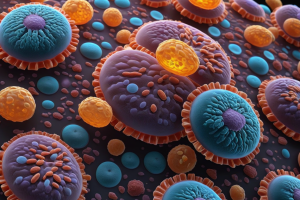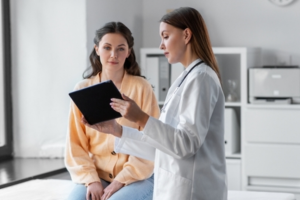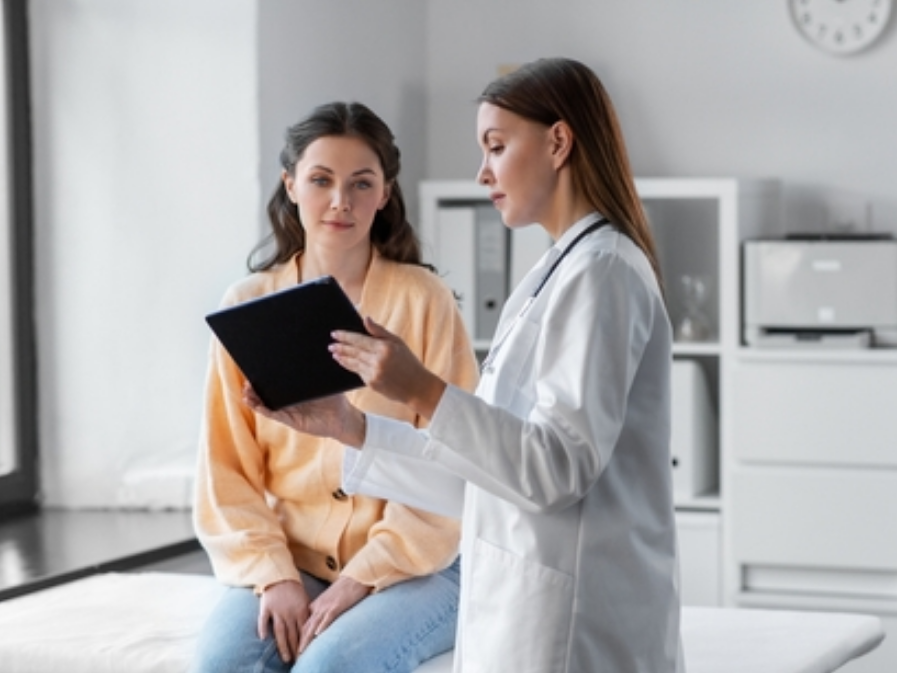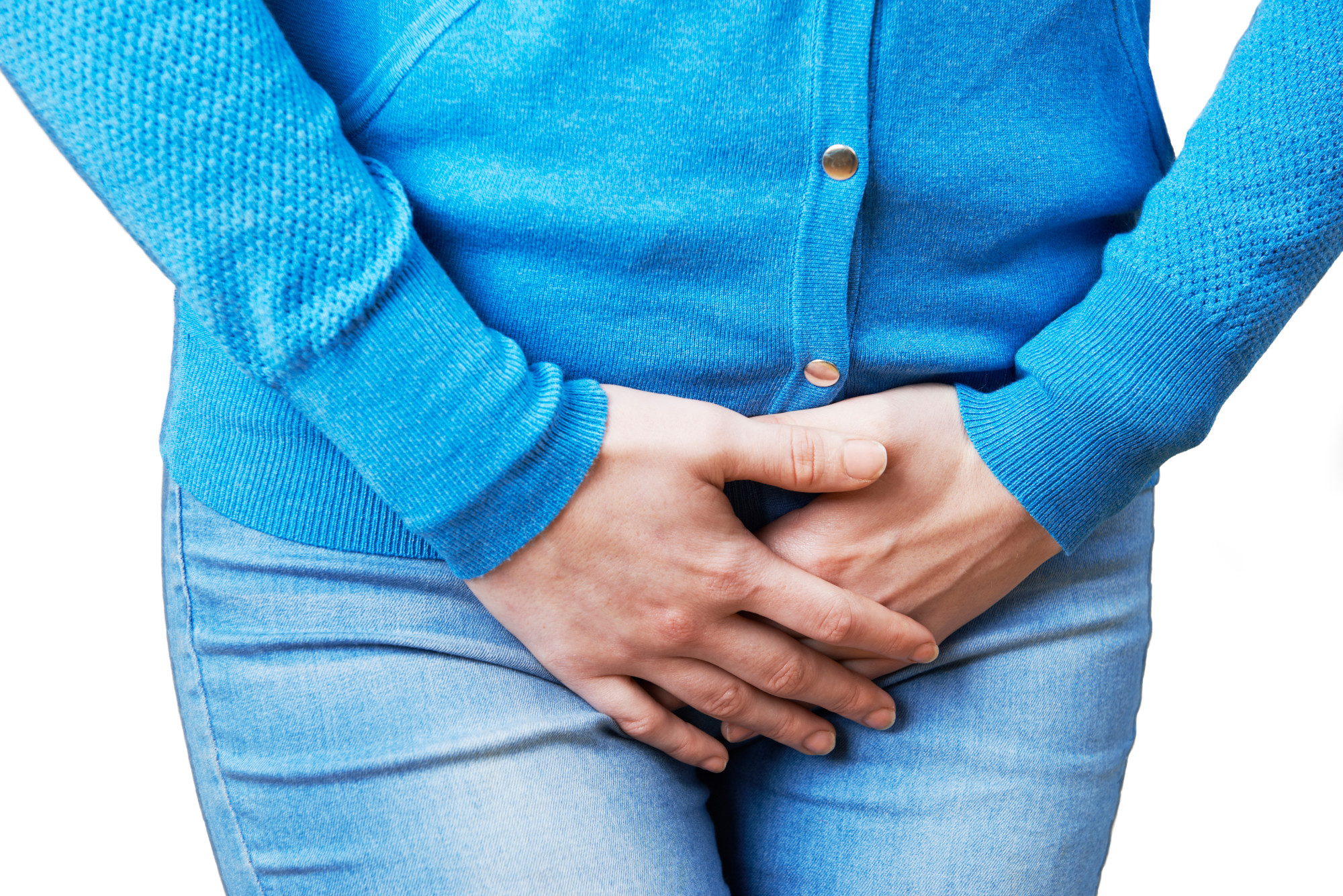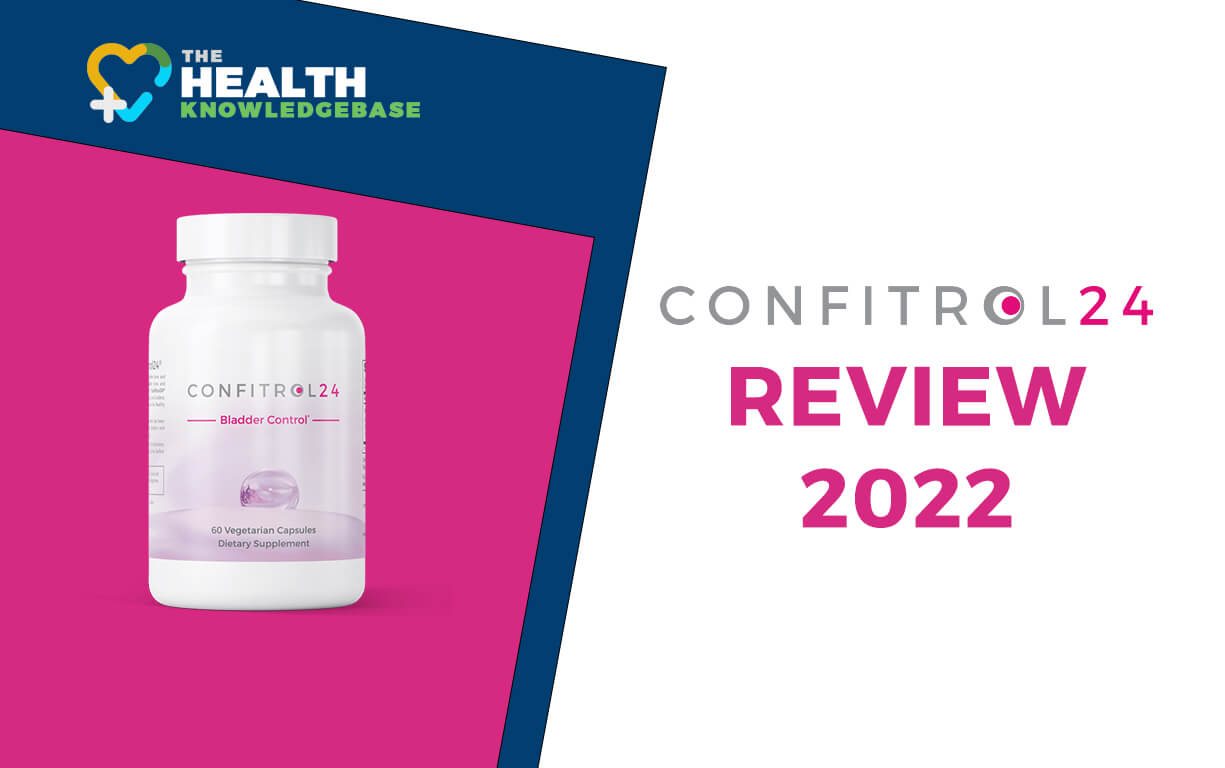Empowering women is a crucial step toward building a more inclusive and equal society. One area that plays a significant role in women’s overall well-being and empowerment is understanding the female reproductive system. By gaining knowledge about their bodies and reproductive health, women can make informed decisions, take control of their own health, and advocate for their needs. In this blog post, we will delve into the intricacies of the female reproductive system, exploring its functions, importance, and how this knowledge can empower women. Let’s embark on this empowering journey together.
Table of Contents:
- The Female Reproductive System: An Overview
- Understanding Female Anatomy
- Menstruation: A Natural Cycle
- Fertility and Ovulation
- Common Reproductive Health Issues in Women
- Promoting Women’s Reproductive Health and Empowerment
- Conclusion
Now, let’s dive into each section and explore the wonders of the female reproductive system.

The Female Reproductive System: An Overview
The female reproductive system is a complex and intricate network of organs and structures that work together to facilitate reproduction and support the overall health of women. Understanding this system is crucial for women’s empowerment, as it allows them to make informed decisions regarding their reproductive health and well-being.
At the core of the female reproductive system are the ovaries, which are responsible for producing eggs and female sex hormones such as estrogen and progesterone. These hormones play a pivotal role in regulating the menstrual cycle and preparing the body for pregnancy.
Connected to the ovaries are the fallopian tubes, slender tubes that serve as the pathway for the eggs to travel from the ovaries to the uterus. It is within the fallopian tubes that fertilization occurs when an egg encounters sperm.
The uterus, commonly known as the womb, is a hollow, muscular organ where a fertilized egg implants and grows into a fetus during pregnancy. The lining of the uterus thickens each month in preparation for potential pregnancy, but if conception does not occur, the lining is shed during menstruation.
The cervix, located at the lower end of the uterus, acts as a gateway between the uterus and the vagina. It plays a vital role in protecting the reproductive organs from infections and facilitating the passage of sperm during intercourse.
Lastly, the vagina, a muscular canal, serves as the birth canal during childbirth and also provides an entry point for the penis during sexual intercourse. It has a self-cleaning mechanism and produces natural lubrication to facilitate comfortable intercourse.
Understanding the female reproductive system goes beyond knowing its anatomy. It involves recognizing the cyclical nature of menstruation, the changes that occur during the menstrual cycle, and the factors that influence fertility. By comprehending the intricacies of this system, women can gain greater control over their reproductive health and make informed decisions regarding contraception, family planning, and seeking medical assistance when necessary.
In the next section, we will explore the different components of female anatomy in more detail. Join us as we delve into the fascinating world of the female reproductive system and the marvels it holds.

Understanding Female Anatomy
To truly comprehend the female reproductive system, it is essential to have a solid understanding of the intricate anatomy that underlies its functioning. Let’s explore the various components of female anatomy that play vital roles in reproduction and overall women’s health.
Starting with the external structures, the vulva encompasses the external genitalia, including the mons pubis, labia majora, labia minora, clitoris, and vaginal opening. These structures not only serve as protective barriers but also contribute to sexual pleasure and arousal.
Moving inward, we encounter the vagina, a muscular canal that connects the external genitalia to the cervix. It is remarkably elastic, allowing for comfortable penetration during sexual intercourse and serving as the passage for childbirth.
Above the vagina lies the cervix, which acts as the gateway between the vagina and the uterus. This cylindrical organ undergoes changes throughout the menstrual cycle, facilitating the transport of sperm during fertile periods and playing a crucial role in maintaining a healthy reproductive system.
Next, we enter the uterus, commonly known as the womb. Shaped like an inverted pear, the uterus serves as the nurturing home for a developing fetus during pregnancy. Its muscular walls can expand significantly to accommodate the growing baby, and it contracts during labor to facilitate childbirth.
Connected to the uterus are the fallopian tubes, delicate structures responsible for transporting eggs from the ovaries to the uterus. Fertilization occurs within these tubes when sperm meets an egg. The fallopian tubes also provide an environment conducive to early embryonic development before the fertilized egg implants itself in the uterus.
Finally, we arrive at the ovaries, the primary reproductive organs in women. These small, almond-shaped glands produce eggs (ova) and release them periodically during the menstrual cycle. Additionally, the ovaries produce hormones such as estrogen and progesterone, which regulate the menstrual cycle, support pregnancy, and influence various aspects of women’s health.
Understanding the female anatomy is not just about knowing the physical structures; it is about appreciating the remarkable complexity and interconnectedness of these organs. By understanding how each component functions and contributes to overall reproductive health, women can take charge of their bodies, make informed decisions, and seek appropriate care when needed.
In the next section, we will explore the natural cycle of menstruation, shedding light on its significance in women’s reproductive health. Join us as we unravel the mysteries of this transformative process and its role in female empowerment.

Menstruation: A Natural Cycle
Menstruation, often referred to as a woman’s “period,” is a natural and recurring process that plays a significant role in the female reproductive system. Understanding menstruation is key to empowering women to embrace their bodies, make informed choices, and maintain optimal reproductive health. Let’s delve into the details of this fascinating and transformative cycle.
Menstruation typically occurs in women of reproductive age, signaling the shedding of the uterine lining when pregnancy has not occurred. It is characterized by the monthly release of blood, along with tissues and fluids, through the vagina. Although it may seem like an inconvenience, menstruation is a fundamental part of a woman’s reproductive health.
The menstrual cycle, on average, lasts around 28 days, although it can vary from woman to woman. This cycle is governed by a complex interplay of hormones, primarily estrogen, and progesterone, which regulate the growth and shedding of the uterine lining.
The cycle begins with the onset of menstruation, marked by the shedding of the uterine lining from the previous cycle. This phase is commonly associated with bleeding and can last anywhere from three to seven days. While the flow may vary in intensity, it is essential to note that each woman’s experience is unique and can differ from month to month.
Following menstruation, the body enters the follicular phase. During this stage, the pituitary gland releases follicle-stimulating hormone (FSH), which stimulates the growth of follicles in the ovaries. Within these follicles, eggs mature, preparing for potential fertilization.
The next phase, known as ovulation, is a critical period in the menstrual cycle. It occurs when a mature egg is released from one of the ovaries and travels into the fallopian tube. Ovulation is triggered by a surge in luteinizing hormone (LH) and is typically accompanied by increased cervical mucus and a slight rise in body temperature. This is the most fertile time in a woman’s cycle when the chances of pregnancy are highest.
If fertilization does not occur, the menstrual cycle enters the luteal phase. During this stage, the ruptured follicle that released the egg transforms into a structure called the corpus luteum. The corpus luteum produces progesterone, which helps prepare the uterus for potential pregnancy. If fertilization does not happen, the corpus luteum eventually disintegrates, leading to a decline in hormone levels and the subsequent shedding of the uterine lining, starting a new menstrual cycle.
Understanding the menstrual cycle empowers women to track their periods, identify potential irregularities, and make informed choices about contraception, family planning, and reproductive health. It also highlights the importance of self-care during this time, as some women may experience physical and emotional changes such as cramps, bloating, mood swings, and fatigue.
By embracing menstruation as a natural and integral part of the female reproductive system, women can appreciate the incredible capabilities of their bodies and advocate for their needs. In the next section, we will explore fertility and ovulation, shedding light on the remarkable processes that allow for the creation of life. Join us as we unravel the wonders of the female reproductive system and its intricate mechanisms.

Fertility and Ovulation
Fertility and ovulation are pivotal aspects of the female reproductive system that influence a woman’s ability to conceive and bear children. Understanding the intricacies of these processes empowers women to make informed decisions about family planning, fertility awareness, and reproductive health. Let’s explore the wonders of fertility and ovulation, shedding light on the mechanisms that enable the creation of life.
Fertility refers to a woman’s reproductive capacity and her potential to conceive. It is influenced by various factors, including age, overall health, hormonal balance, and lifestyle choices. While fertility naturally declines with age, particularly after the age of 35, it is important to note that every woman’s fertility journey is unique.
Central to fertility is the concept of ovulation. Ovulation occurs when a mature egg is released from the ovary, ready to be fertilized by sperm. This process typically takes place once per menstrual cycle, and its timing is crucial for maximizing the chances of pregnancy.
The release of an egg during ovulation is triggered by a surge in luteinizing hormone (LH) from the pituitary gland. This surge prompts the rupture of the mature follicle in the ovary, allowing the egg to be released into the fallopian tube. Ovulation usually occurs around the midpoint of the menstrual cycle, but the timing can vary from woman to woman.
Understanding the signs and symptoms of ovulation can empower women to identify their most fertile days. These signs may include changes in cervical mucus, increased libido, mild pelvic pain or twinges, and a slight increase in basal body temperature. Additionally, using ovulation prediction kits or tracking methods such as basal body temperature charting and monitoring cervical mucus consistency can provide further insights into the timing of ovulation.
It is important to note that while ovulation is a key factor in achieving pregnancy, it is not the sole determinant. Other factors, such as the quality of sperm, the health of the fallopian tubes, and the receptive environment of the uterus, also contribute to successful conception.
For women who are planning to conceive, understanding their fertility window and timing intercourse accordingly can significantly increase the chances of pregnancy. Conversely, for women who are not yet ready to start a family, knowledge of their fertile days allows for effective contraception and family planning.
Empowering women with knowledge about fertility and ovulation enables them to take an active role in their reproductive health. It allows for informed decision-making, proactive management of fertility concerns, and seeking assistance from healthcare professionals when needed.
In the next section, we will explore common reproductive health issues that women may encounter, emphasizing the importance of early detection, prevention, and seeking appropriate medical care. Join us as we navigate the landscape of women’s reproductive health, promoting empowerment, awareness, and well-being.

Common Reproductive Health Issues in Women
Women’s reproductive health is a topic of paramount importance, as it encompasses a range of conditions and concerns that can impact overall well-being and fertility. Understanding and addressing these common reproductive health issues is crucial for women’s empowerment and proactive management of their reproductive health. Let’s explore some of the prevalent reproductive health issues that women may encounter throughout their lives.
Menstrual Disorders:
Menstrual disorders encompass a variety of conditions that affect the regularity, intensity, or duration of menstrual periods. Examples include:
- Menorrhagia: Excessive or prolonged menstrual bleeding.
- Amenorrhea: Absence of menstruation.
- Dysmenorrhea: Painful menstrual periods.
Polycystic Ovary Syndrome (PCOS):
PCOS is a hormonal disorder characterized by enlarged ovaries with small cysts. It can result in irregular periods, excessive hair growth, acne, weight gain, and fertility challenges.
Endometriosis:
Endometriosis is a condition where the tissue that normally lines the uterus grows outside the uterus. It can cause chronic pelvic pain, and painful periods, and may lead to fertility problems.
Fibroids:
Fibroids are noncancerous growths that develop in or around the uterus. They can cause heavy or prolonged menstrual bleeding, pelvic pain, and discomfort.
Pelvic Inflammatory Disease (PID):
PID is an infection that affects the female reproductive organs, often caused by sexually transmitted infections. If left untreated, PID can lead to long-term complications such as infertility and chronic pelvic pain.
Urinary Tract Infections (UTIs):
Although not exclusive to women, UTIs are more common in females. These infections can affect the bladder, urethra, and kidneys, causing discomfort and frequent urination.
Sexual Health Issues:
Sexual health concerns, such as sexually transmitted infections (STIs) and sexual dysfunction, can impact women’s overall well-being and reproductive health. It is important to practice safe sex, seek regular STI testing, and address any concerns related to sexual function or satisfaction.
Reproductive Cancers:
Reproductive cancers, including ovarian, cervical, and uterine cancers, can significantly affect women’s reproductive health. Regular screenings, such as Pap smears and mammograms, are essential for early detection and treatment.
It is important to note that while these are common reproductive health issues, each woman’s experience and needs may vary. Seeking regular check-ups, maintaining a healthy lifestyle, practicing safe sex, and being aware of potential symptoms are crucial steps toward proactive reproductive health management.
Empowering women with knowledge about these issues enables them to recognize potential signs, seek appropriate medical care, and take steps toward prevention and early intervention. Additionally, raising awareness and advocating for improved access to reproductive healthcare services contribute to better overall reproductive health outcomes for women.
In the next section, we will explore strategies and practices that promote women’s reproductive health and empowerment. Join us as we discuss self-care, healthy lifestyle choices, and the importance of seeking professional guidance when needed. Together, we can work towards a world where every woman has the resources and support to prioritize her reproductive well-being.

Promoting Women’s Reproductive Health and Empowerment
Promoting women’s reproductive health and empowerment is a critical endeavor that involves addressing both physical and socio-cultural aspects of women’s well-being. By fostering a supportive and empowering environment, women can take charge of their reproductive health, make informed choices, and advocate for their needs. Let’s explore some strategies and practices that contribute to promoting women’s reproductive health and empowerment.
Comprehensive Sex Education:
Implementing comprehensive sex education programs that provide accurate information about reproductive health, contraception, STI prevention, and consent is crucial. Such programs empower young girls and women to make informed decisions, navigate relationships responsibly, and protect their reproductive well-being.
Accessible Healthcare Services:
Ensuring access to affordable and quality healthcare services is vital for women’s reproductive health. This includes access to reproductive health screenings, contraception options, prenatal and postnatal care, and treatment for reproductive health conditions. Eliminating barriers such as financial constraints, geographical distance, and cultural stigma allows women to seek timely and appropriate care.
Menstrual Health Education:
Educating girls and women about menstrual health is an important step in breaking down taboos and ensuring access to menstrual hygiene products. By promoting open conversations and providing necessary resources, women can manage their periods hygienically and with dignity, allowing them to participate fully in education, work, and social activities.
Empowering Decision-Making:
Supporting women’s autonomy and agency in decision-making regarding their reproductive health is crucial. This includes providing information about contraceptive options, family planning, and fertility awareness methods. By empowering women to make choices that align with their goals and values, they can actively shape their reproductive journeys.
Mental and Emotional Well-being:
Recognizing the interplay between mental and reproductive health is essential. Addressing mental health issues, reducing stress, and promoting self-care strategies contribute to overall well-being and reproductive health. Women should be encouraged to seek support from mental health professionals when needed.
Preventive Care and Regular Check-ups:
Encouraging women to prioritize preventive care and attend regular check-ups, including Pap smears, mammograms, and STI screenings, is vital for early detection and treatment of reproductive health issues. Regular healthcare visits also offer opportunities for education, counseling, and discussions about reproductive goals and concerns.
Community Support and Advocacy:
Building supportive communities that promote reproductive health and empower women is crucial. Community organizations, support groups, and advocacy efforts play a significant role in raising awareness, combating stigma, and addressing systemic barriers to reproductive healthcare.
By embracing these strategies, we can work towards a society where women are knowledgeable, confident, and empowered in matters of reproductive health. Through education, access to healthcare, supportive environments, and self-advocacy, women can take ownership of their reproductive journeys and lead healthy, fulfilling lives.

CONCLUSION
Understanding and empowering women in relation to the female reproductive system is a fundamental aspect of promoting women’s health and well-being. Throughout this blog post, we have explored the intricacies of the female reproductive system, discussed common reproductive health issues, and highlighted strategies for empowerment and proactive care.
By gaining knowledge about the female reproductive system, women can make informed decisions, take control of their reproductive health, and advocate for their needs. From understanding female anatomy to recognizing the natural cycle of menstruation and the significance of fertility and ovulation, women can embrace their bodies and navigate their reproductive journeys with confidence.
We have also touched upon common reproductive health issues that women may encounter, emphasizing the importance of early detection, prevention, and seeking appropriate medical care. By raising awareness, promoting comprehensive sex education, and ensuring access to healthcare services, we can empower women to take charge of their reproductive health and make informed choices.
Promoting women’s reproductive health and empowerment goes beyond individual actions; it requires creating supportive environments, fostering community support, and advocating for systemic changes. By addressing socio-cultural barriers, eliminating stigma, and promoting inclusivity, we can create a world where every woman has the resources and support to prioritize her reproductive well-being.
In conclusion, empowering women through understanding the female reproductive system is a multi-faceted journey that involves education, access to healthcare, supportive communities, and self-advocacy. By embracing these principles and working together, we can foster a society that values women’s reproductive health, promotes empowerment, and ensures that every woman can thrive in all aspects of her life. Let us continue to champion women’s reproductive health and empowerment for a brighter and more equitable future.

FAQs
Why is it important for women to understand their reproductive system?
Understanding the female reproductive system empowers women to make informed decisions, take control of their reproductive health, and advocate for their needs. It allows them to navigate their reproductive journeys with confidence and make choices that align with their goals and values.
What are some common reproductive health issues that women may encounter?
Common reproductive health issues in women include menstrual disorders, polycystic ovary syndrome (PCOS), endometriosis, fibroids, pelvic inflammatory disease (PID), urinary tract infections (UTIs), sexual health issues, and reproductive cancers. Recognizing and addressing these issues is crucial for overall reproductive well-being.
How does menstruation work, and what is its significance?
Menstruation is a natural process where the uterus sheds its lining when pregnancy does not occur. It plays a vital role in the female reproductive system as it signifies the reproductive capability of a woman. Understanding menstruation allows women to track their cycles, identify irregularities, and manage their menstrual health effectively.
How can I determine my fertile days for family planning?
Tracking signs of ovulation, such as changes in cervical mucus, and basal body temperature, and using ovulation prediction kits, can help identify your fertile days. This knowledge enables you to plan intercourse and increase the chances of conception.
What steps can I take to promote my reproductive health?
To promote reproductive health, it is important to prioritize regular check-ups, practice safe sex, maintain a healthy lifestyle, manage stress, and seek timely medical care. Additionally, staying informed about contraception options and practicing open communication with healthcare providers are key steps toward reproductive well-being.
How can I address menstrual cramps and discomfort?
Managing menstrual cramps and discomfort can involve strategies such as over-the-counter pain relief, heat therapy, relaxation techniques, regular exercise, and maintaining a balanced diet. If severe pain persists, consulting a healthcare professional is recommended.
Can reproductive health issues affect fertility?
Yes, certain reproductive health issues like PCOS, endometriosis, and pelvic inflammatory disease (PID) can impact fertility. Timely diagnosis, treatment, and seeking appropriate medical care can help address these issues and improve the chances of conception.
What role does comprehensive sex education play in empowering women?
Comprehensive sex education equips women with accurate information about reproductive health, contraception, STI prevention, and consent. It empowers women to make informed choices, foster healthy relationships, and navigate their sexual and reproductive lives responsibly.
How can I support and advocate for women’s reproductive health?
Supporting women’s reproductive health involves promoting access to healthcare services, eliminating stigma, fostering open conversations, and advocating for policies that prioritize women’s reproductive rights and well-being. Engaging in community organizations, supporting awareness campaigns, and amplifying women’s voices are impactful ways to advocate for change.
What resources are available for women to learn more about their reproductive health?
Various resources such as trusted healthcare providers, educational websites, books, and reputable organizations focused on women’s health provide valuable information about the female reproductive system. Seeking reliable sources and engaging in open discussions can enhance knowledge and promote women’s reproductive health empowerment.
Remember, these FAQs provide general information and it’s always recommended to consult with healthcare professionals for personalized advice and guidance related to individual reproductive health concerns.
Articles Of Interest
Female Sexual Dysfunction – Let’s Talk About It
Best Bladder Control Supplements
Best Bladder Strengthening Supplements For Bladder Health


